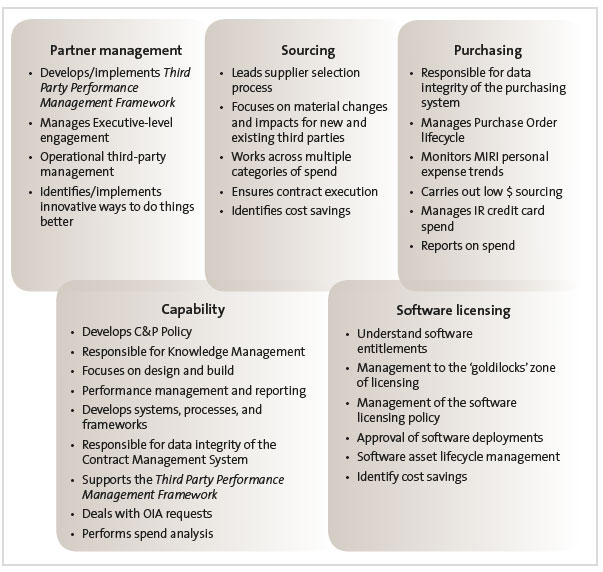Part 2: Background
2.1
In this Part, we describe the context for procurement in the public sector. We also describe how procurement works in the programme.
Procurement in the public sector
2.2
Government agencies procure a wide range of goods and services, and the markets that they operate in also vary.
2.3
The Ministry of Business, Innovation and Employment has a leadership role in public sector procurement. The Ministry works with government agencies to lead best practice procurement in the public sector and make government agencies a customer of choice for suppliers. The Ministry focuses on using a collaborative and centre-led approach to raise standards, improve capability, and reduce duplication in government procurement.
2.4
The Ministry has published a series of procurement rules called the Government Rules of Sourcing (the Rules).2 The Rules set out good practice guidelines for government agencies to follow in the sourcing stages of the procurement process.
2.5
The Rules are intended to help government agencies design processes that are robust and that build public confidence in how they plan and carry out their procurement. This should help increase public trust that government spending is being planned and executed well.
2.6
In 2009, Cabinet agreed to initiate the Government Procurement Reform programme, which is aimed at improving procurement policy and practice throughout the State sector. Some of the desired changes come from increased use of all-of-government contracts.
2.7
All-of-government contracts establish single-supply agreements for selected goods and services to deliver cost and efficiency savings. Inland Revenue is moving away from owning assets and towards sharing assets and service contracts with other government agencies.
Procurement in the Business Transformation programme
2.8
Inland Revenue is procuring a wide range of goods and services for the programme. When stage 1 of the programme went live in 2017, Inland Revenue had more than 300 contracts with several different suppliers. Most of these contracts were worth more than $100,000, and some were worth significantly more than $1 million. Together, these contracts will cost Inland Revenue more than $500 million for the programme's duration.
2.9
Because of the significant value of the contracts, it is important that Inland Revenue procures these goods and services in a cost-effective way. It also needs to manage these contracts well to get the best outcomes from them.
2.10
Inland Revenue's Commercial and Procurement team is responsible for leading procurement for Inland Revenue, including for the programme. The team is accountable for five functions in Inland Revenue (see Figure 1).
Figure 1
Accountabilities of the Commercial and Procurement team

Source: Adapted from an Inland Revenue presentation, October 2016.
2.11
Inland Revenue has also adjusted its governance arrangements to meet the needs of the organisation as the programme has progressed. The Commissioner of Inland Revenue is now the programme sponsor. This recognises the significance of the programme to the whole organisation. Inland Revenue's Investment and Performance Committee provides governance oversight for procurement and is part of the Executive Governance System.
2.12
Like all government agencies, Inland Revenue is expected to follow the Rules. These are supplemented by its own procurement guidance and policies. These are consistent with the Rules but include additional requirements and detail that are specific to Inland Revenue and the programme. Examples include Inland Revenue's procurement policy and organisational probity framework, and a sourcing strategy for the programme.
2: The Government Rules of Sourcing can be found at www.procurement.govt.nz and include a full description of which agencies are required to follow the Rules.

